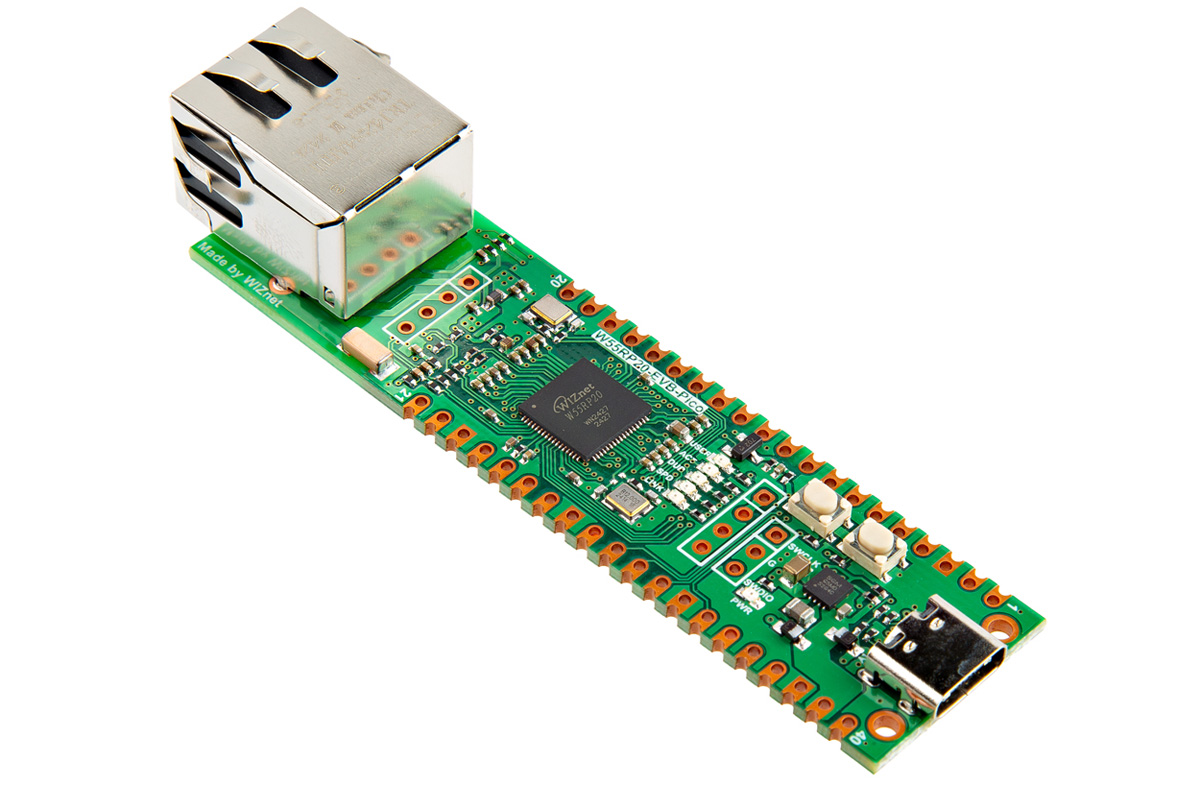NXP i.MX 94 is an octa-core Arm SoC with up to four Cortex-A55 application cores, two Arm Cortex-M33 real-time/functional safety cores, two Arm Cortex-M7 real-time/functional safety cores, and an NXP eIQ Neutron NPU designed for Edge AI industrial and automotive applications I initially thought it would be a cost-down version of the NXP i.MX 95, and while it shares many of the same features, it’s more an application-specific processor designed specifically for industrial and automotive applications, lacking a 3D GPU, camera input interfaces, a MIPI DSI display interface, and 10GbE networking, but increasing the number of real-time cores (at the cost of application cores) and adding several networking features such as an Ethernet time-sensitive networking (TSN) switch, 2.5GbE interface, an Ethercat controller, and support for industrial protocols like Profinet or OPC-UA FX. NXP i.MX 94 specifications: CPU Up to 4x Arm Cortex-A55 cores 2x Arm Corex-M7 cores, one for functional […]
Microchip PIC32MZ-W1 is a 32-bit MIPS WiFi MCU with 60+ GPIO, USB, CAN Bus, Ethernet, and more
Microchip recently released the PIC32MZ-W1 wireless MCU along with 20 other WiFi parts, including WiFi MCUs, link controllers, network controllers, and plug-and-play modules. Among them, the PIC32MZ-W1 wireless MCU is the most interesting because of its 32-bit MIPS microAptiv M-class core running at up to 200MHz, advanced hardware security features, and integrated Microchip Trust Platform for secure cloud authentication. Over the years ESP32 MCUs have become the go-to choice for wireless applications. Still, one problem we always have with ESP32 SoCs is their limited GPIO option due to their strapped-out pin structures. But this new MCU has over 60 GPIO pins to work with along with Ethernet MAC, USB, CAN Bus, CANFD, SPI, I2C, SQI, UART, ADC, JTAG, and more. PIC32MZ-W1 wireless MCU specifications MCU MIPS32 M-Class core clocked at 200 MHz 16KB I-Cache, 16KB D-Cache microMIPS mode (up to 35% smaller code size) DSP extensions (4x 64-bit accumulators, single-cycle […]
Wiznet W55RP20-EVB-Pico board features W55RP20 SiP with W5500 Ethernet controller and RP2040 MCU
Wiznet has recently released the W55RP20-EVB-Pico dev board, a compact board based around the W55RP20 SiP that fuses the Raspberry Pi RP2040 MCU and the W5500 Ethernet controller into a single IC, plus a 2MB flash chip for firmware storage. Just last month we wrote about W5100S-EVB-Pico2 and W5500-EVB-Pico2 dev boards, both the boards have a newer Raspberry Pi RP2350 MCU and external Ethernet controller (W5500 or W5100S). The RP2350 offers additional security features such as One Time Programmable (OTP) memory, secure boot, and Arm TrustZone technology, making it more suitable for secure applications. The W55RP20 on the other hand integrates a W5500 Ethernet controller and the RP2040 in a single SiP which is also pin-compatible with the Raspberry Pi Pico, making it easy to use existing Pico accessories and code examples. W55RP20-EVB-Pico dev board specifications: SiP– W55RP20 microcontroller MCU – Raspberry Pi RP2040 Core– Dual Cortex M0+ cores up […]
NXP i.MX RT700 dual-core Cortex-M33 AI Crossover MCU includes eIQ Neutron NPU and DSPs
NXP has recently announced the release of NXP i.MX RT700 RT700 AI crossover MCU following the NXP i.MX RT600 series release in 2018 and the i.MX RT500 series introduction in 2021. The new i.MX RT700 Crossover MCU features two Cortex-M33 cores, a main core clocked at 325 MHz with a Tensilica HiFi 4 DSP and a secondary 250 MHz core with a low-power Tensilica HiFi 1 DSP for always-on sensing tasks. Additionally, it integrates a powerful eIQ Neutron NPU with an upgraded 7.5 MB of SRAM and a 2D GPU with a JPEG/PNG decoder. These features make this device suitable for applications including AR glasses, hearables, smartwatches, wristbands, and more. NXP i.MX RT700 specifications: Compute subsystems Main Compute Subsystem Cortex-M33 @ up to 325 MHz with Arm TrustZone, built-in Memory Protection Unit (MPU), a floating-point unit (FPU), a HiFi 4 DSP and supported by NVIC for interrupt handling and SWD […]
Akeana unveils 10 RISC-V cores suitable for microcontrollers up to data center chips
Founded about three years ago, Akeana has just officially launched and announced three 32-bit and 64-bit RISC-V processor lines and SoC IP with the Akeana 100 series for 32-bit microcontrollers, the Akeana 1000 series for 64-bit processors with MMU, and the Akeana 5000 series with much higher single-thread performance and designed for laptops, data centers, and cloud infrastructure. The company also introduced Scalable Coherent Interconnect, Interrupt Controller, and IOMMU IP for building out compute subsystems based on the aforementioned RISC-V cores, as well as AI-targeted Vector RISC-V Cores and Matrix Computation IP. The design team is said to have previously worked on Marvell’s ThunderX2 server chips. Akeana 100 Series The Akeana 100 Series is a line of highly configurable processors with 32-bit RISC-V cores that support applications from embedded microcontrollers to edge gateways, to personal computing devices. Four Akeana 100 RISC-V cores are available Akeana 110 for area- and power-constrained […]
Microchip PIC64GX is a quad-core 64-bit RISC-V microprocessor for real-time processing
Microchip has introduced its first 64-bit RISC-V microprocessor family with the PIC64GX pin-to-pin compatible with the company’s PolarFire SoC FPGA devices and designed for edge designs for the industrial, automotive, communications, IoT, aerospace, and defense segments. The PIC6GX MPU supports asymmetric multiprocessing (AMP) to run Linux, real-time operating systems, and bare metal in a single processor cluster with secure boot capabilities. The company further claims the PIC64GX MPU is “the first RISC-V multi-core solution that is AMP capable for mixed-criticality systems”. The first member of the PIC64GX RISC-V family is the PIC64GX1000 microprocessor. Microchip PIC64GX1000 specifications: CPU Quad-core SiFive U54 64-bit five-stage, single-issue, in-order pipeline RISC-V (RV64GC) processor at up to 625 MHz with AMP and deterministic latencies, PMP and MMU units Single-core SiFive E51 64-bit RISC-V (RV64IMAC) monitor processor core at up to 625 MHZ with PMP unit Cache L1 memory subsystem with Single-Error Correct, Double-Error Detect (SECDED) Flexible […]
SiFive announces Essential Gen4 RISC-V CPUs for embedded applications
As the RISC-V Summit Europe 2024 is underway, SiFive has announced the fourth generation of its “Essential” RISC-V CPUs (Essential Gen4) with improved power efficiency and more flexible interfaces for SoCs used in embedded devices. The update covers 32-bit and 64-bit RISC-V cores including the U6 and U7-series 64-bit application processors, the S2, S6, and S7 64-bit real-time embedded processors, and the E2, E6, and E7 32-bit real-time embedded processors. Essential Gen4 IP keys features: Up to 40% runtime power reduction 8x different baseline embedded 32-bit and 64-bit cores From 2-stage single-issue to 8-stage superscalar Improved L2 cache and enhanced L1 memory Configuration and integration options CPU type, profile, and options On-chip memories selection System, peripheral, and front ports Advanced power management and security Debug and trace Software support includes embedded Linux and FreeRTOS operating systems and Eclipse-based IDE for C/C++ development. That’s another low-quality, light-on technical details announcement from […]
Cavli C17QS Cat 1.bis cellular IoT and GNSS module offers more memory, global support, a new FreeRTOS SDK
Cavli Wireless C17QS is a Cat 1.bis cellular IoT and GNSS module that builds up on the Qualcomm QCX216-powered C16QS Cat 1.bis Cellular IoT module introduced last year, with more memory (2MB RAM) and storage (8MB flash), a wider range of LTE bands, multi-band (L1 and L5) GNSS, and a new FreeRTOS SDK for more flexibility compared to the C16QS. The Cavli C17QS Cat 1bis module is designed around a Qualcomm QCX217 Arm Cortex-M3 microcontroller clocked at up to 306MHz clock speed and running FreeRTOS real-time operating system. The module features a range of interfaces including UART, USB 2.0, USIM, SWD, ADCs, I2S, I2C, SPI, and GPIO pins. The new module is pin-to-pin compatible with the C16QS module for easier design upgrades. Cavli C17QS specifications: Wireless IC – Qualcomm QCX217 Arm Cortex-M3 @ 306 MHz, cellular modem-RF Memory – 2MB RAM Storage – 8 MB flash Cellular connectivity LTE CAT […]










